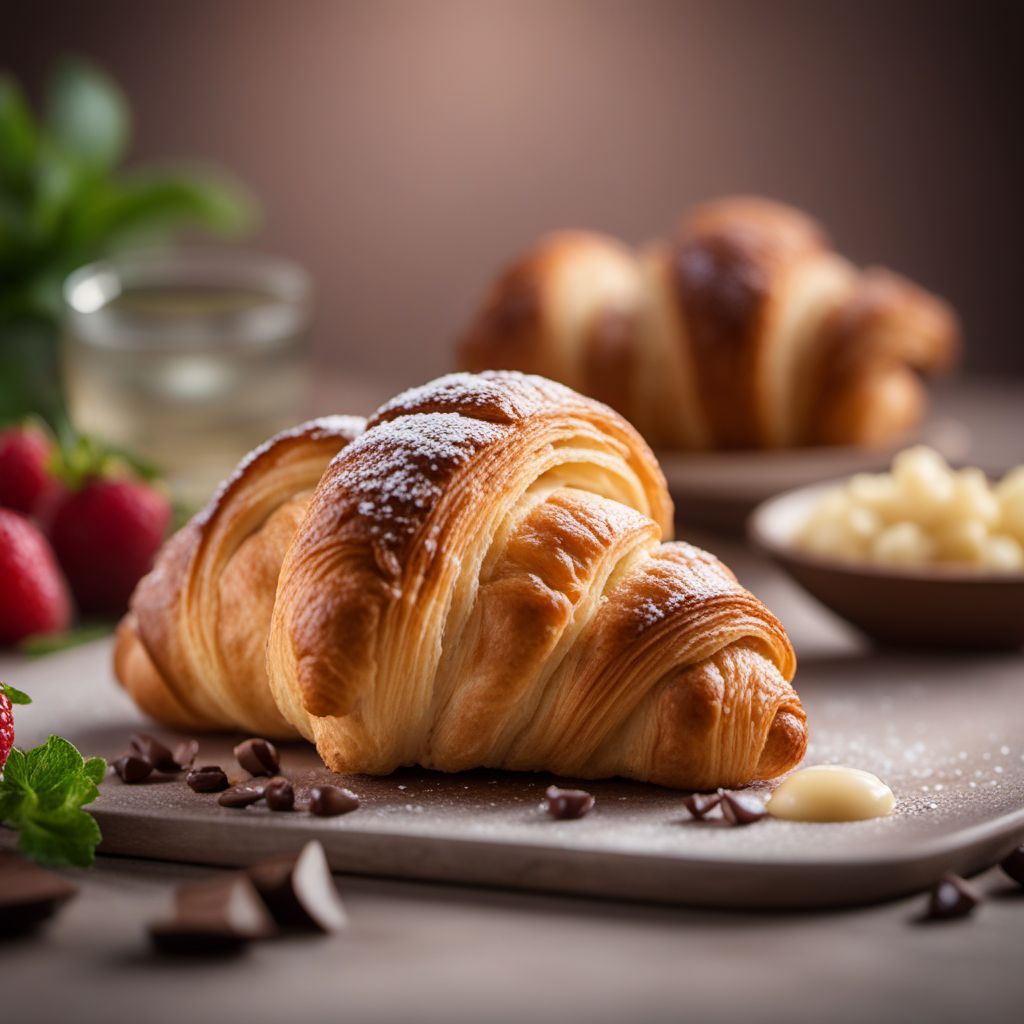
Ingredient
Croissant, filled with chocolate
Decadent Delights: Chocolate-Filled Croissant
A chocolate-filled croissant is made by rolling a strip of chocolate into a croissant dough and then baking it until golden brown. The result is a buttery, flaky pastry with a soft, melt-in-your-mouth interior and a sweet, gooey center of chocolate. The croissant itself has a delicate, layered texture, while the chocolate adds a luscious richness that complements the buttery notes perfectly. It is best enjoyed warm, allowing the chocolate to slightly melt and create a heavenly experience for your taste buds.
Origins and history
The croissant, originally from Austria, gained immense popularity in France during the 19th century. It quickly became a staple in French bakeries and cafes, and the addition of chocolate to the croissant dough was a stroke of genius. Today, the chocolate-filled croissant, or pain au chocolat, is a beloved pastry in France and is enjoyed by pastry enthusiasts around the world. It is often enjoyed for breakfast or as a sweet treat throughout the day.
Nutritional information
A chocolate-filled croissant is a delightful indulgence that provides a burst of energy and satisfies your sweet tooth. It is high in calories and fat due to the butter and chocolate content, so it should be enjoyed in moderation as part of a balanced diet.
Allergens
Wheat, milk, soy, and eggs
How to select
When selecting a chocolate-filled croissant, look for one that is golden brown in color with a flaky exterior. The croissant should feel light and airy when picked up, indicating that it is properly baked. The chocolate filling should be visible and evenly distributed throughout the pastry. Avoid croissants that appear overly greasy or have a dull, pale color, as these may indicate poor quality or underbaking.
Storage recommendations
To maintain the freshness and quality of a chocolate-filled croissant, it is best to store it in an airtight container at room temperature. Avoid refrigerating the pastry, as it can cause the croissant to become stale and lose its flaky texture. If you plan to consume it within a day or two, leaving it at room temperature is sufficient. However, if you need to store it for longer, freezing is recommended. Wrap the croissant tightly in plastic wrap or place it in a freezer bag before freezing. When ready to enjoy, thaw it at room temperature or reheat it in a preheated oven for a few minutes to restore its crispness.
How to produce
Producing a chocolate-filled croissant requires advanced baking skills and knowledge of pastry techniques. It involves making a laminated dough, which requires precise layering of butter and dough to create the signature flaky texture. The dough is then rolled and shaped around a strip of chocolate before being baked to perfection. While it may be challenging for amateurs to produce a croissant of professional quality, there are simplified recipes available for those who want to try their hand at home.
Preparation tips
To fully enjoy a chocolate-filled croissant, warm it in a preheated oven at 350°F (175°C) for 5-7 minutes until the exterior becomes slightly crispy and the chocolate filling is soft and gooey. Alternatively, you can microwave it for 10-15 seconds to achieve a similar effect. Pair it with a cup of coffee or tea for a delightful breakfast or afternoon treat. For an extra touch of indulgence, dust the croissant with powdered sugar or drizzle it with melted chocolate.
Culinary uses
A chocolate-filled croissant is commonly enjoyed on its own as a sweet breakfast pastry or as a snack throughout the day. It pairs well with a hot cup of coffee or tea, allowing the flavors to complement each other. In some cases, it can also be used as a base for other desserts, such as bread pudding or French toast.
Availability
Chocolate-filled croissants are commonly available in French bakeries and pastry shops around the world. They can also be found in upscale cafes and specialty bakeries that offer a wide range of pastries and baked goods.


